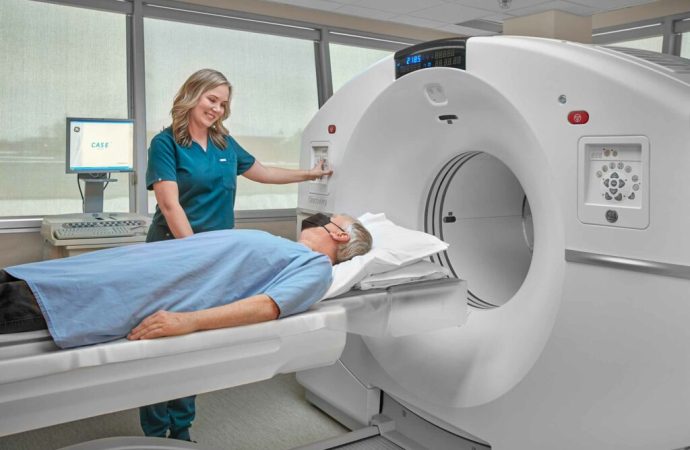Introduction The global PET scanners market is projected to reach US$ 3.80 billion by 2033, up from US$ 2.73 billion in 2024, reflecting a CAGR of 3.73% during the forecast period 2025–2033. The market’s expansion is driven by the rising prevalence of cancer and neurological disorders, advancements in imaging technologies, increasing demand for early disease
Introduction
The global PET scanners market is projected to reach US$ 3.80 billion by 2033, up from US$ 2.73 billion in 2024, reflecting a CAGR of 3.73% during the forecast period 2025–2033. The market’s expansion is driven by the rising prevalence of cancer and neurological disorders, advancements in imaging technologies, increasing demand for early disease detection, growth in healthcare expenditure, aging populations, and the integration of artificial intelligence (AI) in diagnostic imaging to improve accuracy and operational efficiency.
Request a free sample copy of the report: https://www.renub.com/request-sample-page.php?gturl=pet-scanners-market-p.php
The market report offers an in-depth analysis segmented by product type (full ring PET scanner, partial ring PET scanner), modality (PET-CT, PET-MRI), application (oncology, cardiology, neurology, others), end use (hospitals, diagnostic imaging centers, academic and research institutes), countries, and key companies from 2025 to 2033.
Market Overview
Positron Emission Tomography (PET) scanners are advanced medical machines that check how the body’s cells are working.
They use special radioactive tracers that release tiny rays called gamma rays. The PET scanner detects these rays and creates very detailed images of organs and tissues.
PET scans are used for:
- Brain problems like Alzheimer’s and Parkinson’s disease
- Cancer diagnosis, checking how far it has spread, and monitoring treatment
- Heart checks to see how well it works
- Combined scans like PET-CT and PET-MRI, which mix body pictures and cell activity for better results
PET scans are very helpful because they can detect diseases early, help plan treatments, and monitor how well therapy is working. They give a close look at the body at a cellular level, which normal scans cannot do.
The use of PET scanners is growing worldwide because more people know about personalized medicine, early detection, and painless imaging tests. Developing countries are also seeing more growth as hospitals invest in advanced diagnostic machines.
Key Growth Drivers

Image by: Yandex.com
1. Rising Incidence of Cancer and Neurological Disorders
The rise of long-term and slowly worsening diseases is helping the PET scanner market grow. PET scans give detailed information about how cells and body processes work, which makes them very important for finding diseases early, making accurate diagnoses, and checking how treatments are working.
For example, brain problems like Alzheimer’s affect millions of people worldwide. In the U.S., about 6.7 million people aged 65 and older were diagnosed in March 2023. PET scans can spot amyloid plaques and unusual brain activity early, which helps doctors provide the right care at the right time.
Similarly, the increase in cancer cases around the world is driving the need for advanced PET scanners to check how far cancer has spread, plan treatments, and monitor results.
2. Advancements in Imaging Technology
Technological innovations have significantly enhanced PET scanners, improving image resolution, scan speed, and diagnostic accuracy. Notable advancements include:
- Time-of-flight (TOF) technology for faster, more precise scans
- Hybrid imaging systems (PET/CT and PET/MRI) for comprehensive analysis
- AI and machine learning integration for automated image interpretation and workflow optimization
For instance, in November 2024, a prominent Pennsylvania cardiovascular practice adopted the Positron Attrius PET system, demonstrating the increasing clinical use of advanced PET technology, particularly for cardiac imaging. Improved technology enhances patient comfort, reduces scanning time and radiation exposure, and supports better clinical decision-making.
3. Expansion of Healthcare Infrastructure
Healthcare infrastructure growth, especially in emerging markets, is driving the adoption of PET scanners. Upgraded hospitals and diagnostic centers invest in advanced imaging devices to improve early disease detection and personalized care. Rising healthcare expenditure, coupled with the aging population and increased chronic disease prevalence, supports market growth.
Governments worldwide are facilitating access to advanced imaging technology through funding initiatives, public-private partnerships, and healthcare reforms, boosting the penetration of PET scanners in both urban and underserved regions.
Market Challenges
1. High Cost of Equipment and Procedures
PET scanners and their maintenance involve significant investment. Costs include equipment purchase, installation, radiotracers, shielding, and skilled workforce training. These high expenses result in costly diagnostic procedures, limiting patient access, particularly in low- and middle-income countries. High operational costs remain a major barrier to widespread market adoption.
2. Regulatory and Reimbursement Challenges
Regulatory frameworks for PET imaging vary by region and involve strict guidelines for radiotracer use, equipment safety, and clinical protocols. Additionally, inconsistent reimbursement policies across countries hinder hospital and clinic adoption. Low or delayed reimbursements discourage investment in PET technology despite its clinical advantages, slowing market growth.
Get Customization in the Report: https://www.renub.com/request-customization-page.php?gturl=pet-scanners-market-p.php
Regional Insights
1. United States
The U.S. market is characterized by rapid product launches and innovation aimed at improving image quality and reducing scan time. Digital PET scanners with enhanced sensitivity are widely used for tumor localization and treatment monitoring. Collaboration between healthcare providers and technology companies fosters the development of novel radiotracers, expanding clinical applications.
2. United Kingdom
UK initiatives focus on improving cancer care through advanced diagnostics. The National PET Imaging Platform (NPIP), launched in October 2023, integrates AI analytics for precise and timely diagnosis. Investments from the NHS, Medical Research Council, and Innovate UK strengthen PET technology adoption for both clinical and research purposes.
3. China
China’s PET scanner market is expanding due to increasing healthcare spending and rising chronic disease incidence. The government actively supports advanced imaging technologies, driving the adoption of hybrid systems like PET/CT and PET/MRI. Regional manufacturers are also introducing cost-effective PET solutions to meet the growing demand in hospitals and diagnostic centers.
4. Saudi Arabia
Saudi Arabia is modernizing its healthcare infrastructure and investing in diagnostic imaging technologies. Rising chronic disease incidence, especially cancer and neurological disorders, fuels PET scanner adoption in urban centers like Riyadh, Jeddah, and Dammam. There is significant growth potential in underserved regions as initiatives aim to improve healthcare access and early disease detection.
Recent Developments
- June 2024: Augmented whole-body scanning via AWSM-PET shows improved image clarity and system sensitivity for clinical PET/CT.
- May 2024: Steinberg Diagnostic Medical Imaging (SDMI) installs Canon Medical Systems’ Aquilion Serve SP CT scanner with AI-driven workflow automation, improving throughput and diagnostic consistency.
- April 2024: CDL Nuclear Technologies launches mobile cardiac PET/CT trailers, delivering advanced imaging directly to healthcare facilities.
Market Segmentation
Product Type: Full Ring PET Scanner, Partial Ring PET Scanner
Modality: PET-CT, PET-MRI
Application: Oncology, Cardiology, Neurology, Others
End Use: Hospitals, Diagnostic Imaging Centers, Academic & Research Institutes
Countries Covered: United States, Canada, France, Germany, Italy, Spain, United Kingdom, Belgium, Netherlands, Turkey, China, Japan, India, South Korea, Thailand, Malaysia, Indonesia, Australia, New Zealand, Brazil, Mexico, Argentina, South Africa, UAE, Saudi Arabia
Key Companies Covered: Canon Medical Systems, GE Healthcare, Kindsway Biotech, Koninklijke Phillips N.V., Mediso Ltd., PerkinElmer, Positron, Shimadzu Corporation, Siemens Healthineers AG
Outlook
The PET scanners market is poised for steady growth through 2033, driven by rising disease prevalence, technological advancements, and expanding healthcare infrastructure. Providers integrating AI, hybrid imaging, and cost-effective solutions are expected to capture the largest market share, particularly in emerging regions.
About the Company
Renub Research is a Market Research and Consulting Company with over 15 years of experience in international B2B research, surveys, and consulting. We provide comprehensive business research solutions to help companies make informed decisions. Our clientele spans Healthcare, Travel & Tourism, Food & Beverages, Energy, IT, Telecom, Chemicals, Logistics, Automotive, Retail, Construction, and Agriculture. Our team consists of professionals with graduate, postgraduate, and Ph.D. degrees in Finance, Marketing, Biotechnology, Medicine, IT, Environmental Science, and more.
Contact Us:
Company Name: Renub Research
Contact Person: Rajat Gupta
Phone No: (D) +91-120-421-9822 (IND)
Email: rajat@renub.com
















